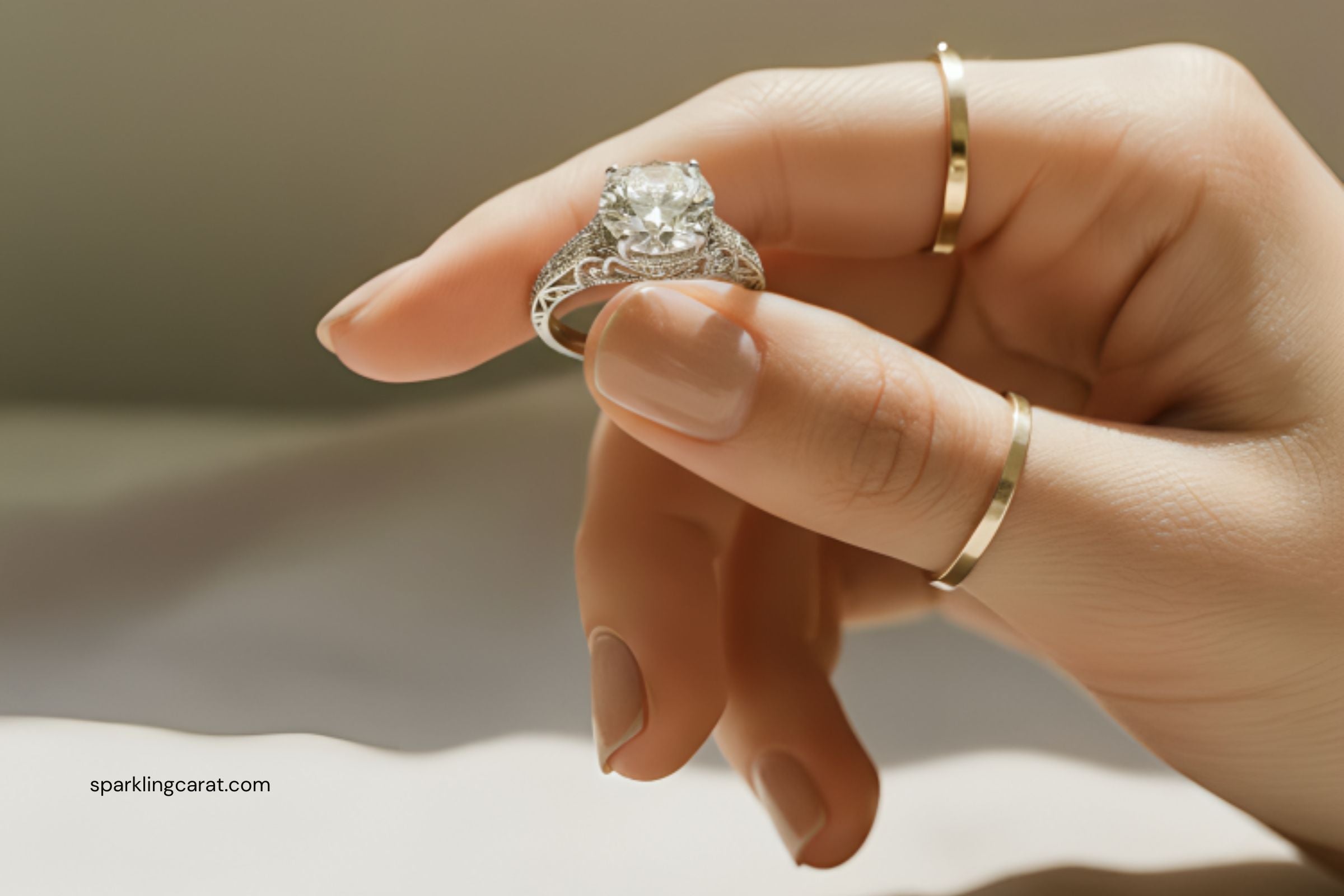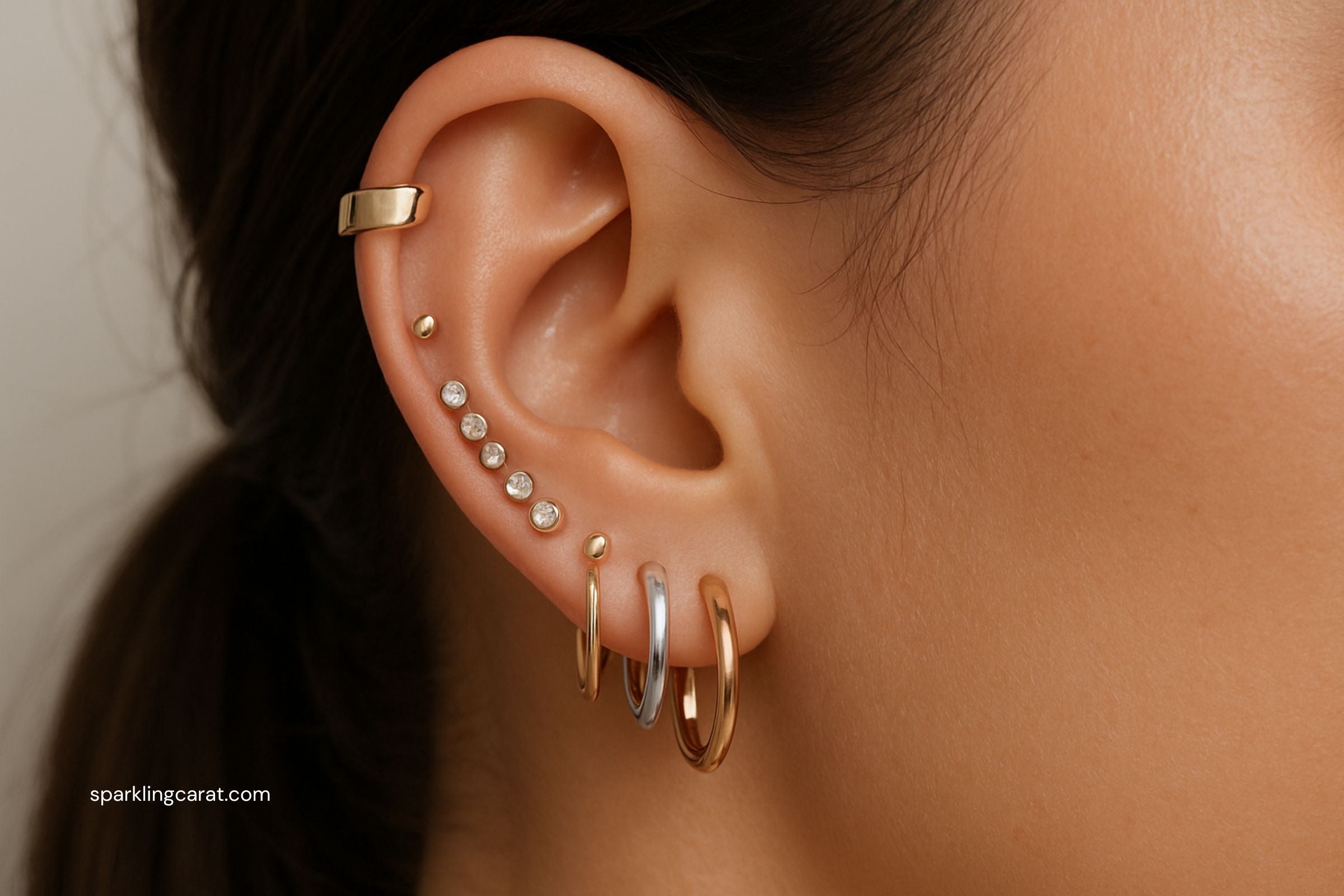Lab-Grown Diamonds Go Mainstream: Ethics Meets Elegance
A quiet revolution has been underway in the world of fine jewelry: lab-grown diamonds have moved from niche curiosity to mainstream option. Once framed as merely “synthetic” alternatives, they’re now being chosen by couples, designers and ethical-minded buyers for reasons that go beyond price.
Lab-grown stones offer the same chemical, optical and physical properties as mined diamonds while opening new conversations about provenance, environmental impact, and value. For buyers who want both sparkle and a clearer conscience, lab-grown diamonds are hitting the sweet spot, and the market data shows they’re doing so fast.
In this longform piece we’ll map the landscape: how lab-grown diamonds are made, why buyers (especially Millennials and Gen Z) are shifting toward them, what the environmental trade-offs really look like, how industry players are responding, and practical tips for shopping, certification and care. Where relevant, I’ll link this trend to related stories on personalization, sustainability and heirloom reinvention across our blog.
What “lab-grown” actually means
Lab-grown diamonds are real diamonds. They’re composed of the same carbon lattice and score the same 10 on the Mohs hardness scale. The main commercial production methods are:
-
High-Pressure High-Temperature (HPHT): recreates the high-pressure conditions of the Earth’s mantle.
-
Chemical Vapor Deposition (CVD): grows diamond layers from carbon-rich gas in a vacuum chamber.
Both methods produce gem-quality stones that are indistinguishable to the naked eye from mined diamonds; only specialized instruments reveal their origin. Retailers and labs now market lab-grown stones under many names, lab-created, lab-grown, synthetic or man-made, but chemically they are diamonds.
Scale & adoption: the numbers behind the shift
The lab-grown diamond market is growing rapidly. Multiple market reports project strong expansion in the coming decade, with forecasts hitting double-digit CAGRs and market values rising into the tens of billions of dollars. One forecast projected the lab-grown market to expand from roughly $25–30 billion in the mid-2020s toward significantly larger totals by 2030.
Consumption data also signals a behavioral change: wedding and engagement ring studies in 2025 reported that more than half of couples chose lab-grown stones for their rings, a watershed moment for what was formerly a minority option. Younger buyers (Millennials and Gen Z) are a major driver: surveys and wedding data show this cohort is embracing lab-grown stones for reasons that extend well beyond cost.
Why the uptake? Price is a big part of it, lab-grown diamonds often retail for substantially less than comparable mined stones, but affordability is only one facet. Traceability, the ability to specify production methods and lower perceived environmental impact are equally influential. Recent reporting suggests that in some markets lab-grown stones already account for a large share of engagement-ring sales, fundamentally reshaping sector dynamics.
Ethics and environment: separating marketing from life-cycle facts
The environmental argument is the most frequently cited reason buyers choose lab-grown diamonds, yet it requires nuance.
-
Life-cycle studies show lab-grown diamonds typically produce far less land disturbance and mineral waste than open-pit mining. Under certain production scenarios, especially when renewable energy is used in the growth process, lab-grown diamonds can show dramatically lower greenhouse-gas emissions per carat than mined diamonds. A 2024 review highlighted how energy source and production efficiency are the deciding variables in a lab-grown diamond’s carbon footprint.
-
But lab production can still be energy-intensive. If factories rely on fossil-fuel electricity, the emissions gap narrows. So the real ethical edge comes from careful sourcing: lab brands that use renewable energy, carbon capture, or transparent offset strategies can claim materially lower environmental impacts. Some firms now explicitly market "renewable-energy grown" or carbon-captured diamonds as premium, higher-integrity options.
-
Human rights & traceability. Lab production avoids many mining-related labor risks and reduces land-use problems. From a supply-chain transparency standpoint, vessels of origin are far easier to document in a factory than in remote mine supply chains, an advantage in ethical marketing and chain-of-custody verification.
In short: lab-grown diamonds are generally a better environmental and labor choice when they’re produced with clean energy and transparent practices. Buyers should look past headlines and ask about a producer’s energy mix and disclosure practices rather than assuming “lab = green.”
Industry reaction: disruption, strategy and the “value” dilemma
The lab-grown price advantage and popularity among younger buyers have forced legacy players to react, not always smoothly. Iconic miners and traditional luxury brands initially dismissed lab diamonds; some then launched synthetic lines (e.g., De Beers’ Lightbox) while others doubled down on natural gemstones and storytelling. But the flood of lower-cost product from major manufacturers, especially large-scale production in China, depressed prices and created market strain for some incumbents. Recent coverage documented how market dynamics have pressured legacy miners and even sparked strategic reconsiderations at major companies.
At the same time, a new segment is arising: premium lab-grown diamonds. Producers and designers are attempting to preserve a sense of luxury by emphasizing small-batch production, superior cut quality, renewable-energy production, and craftsmanship in settings and design. This “ethics + elegance” positioning aims to make lab diamonds a conscious luxury rather than a commodity.
What shoppers need to know: buying, certification & value
If you’re considering a lab-grown diamond, here’s a practical checklist:
A. Ask about origin & production.
Does the brand disclose where the diamond was grown? Was renewable energy used? Are there chain-of-custody certificates? Labels like “grown with 100% renewable energy” are meaningful when verified.
B. Certification matters.
Reputable labs (GIA, IGI, GCAL) now provide grading reports for lab-grown stones, detailing cut, color, clarity and carat, just as they do for mined diamonds. A grading report is essential for insurance and resale. Note that the gem labs will indicate origin (lab vs natural) on the certificate.
C. Understand price dynamics.
Lab-grown diamonds typically cost less than mined diamonds of similar grade, sometimes substantially less, but prices are sensitive to market supply. Recent industry reporting warns of volatile pricing due to rapid scaling and competition. Consider whether you view your purchase primarily as jewelry or as an investment, lab-grown diamonds currently function more as the former.
D. Value the setting & craftsmanship.
If ethically sourced elegance is your aim, the setting and brand story matter. Premium design, recycled precious metals, bespoke work and transparent sourcing can set a lab-grown piece apart. The setting is where emotion, story and longevity live, and it’s where the “luxury” is made tangible.
Styling & personalization: where lab-grown diamonds shine in modern life
Lab-grown diamonds dovetail perfectly with current consumer priorities:
-
Personalization: lower stone prices make it easier to choose larger carats, unique cuts, or custom designs without the cost penalty of comparable mined stones. That fuels bespoke engagement rings and creative non-traditional choices. (See our pieces on personalization and heirloom reinvention for styling ideas.)
-
Everyday luxury: designers use lab stones in fashion-forward, gender-fluid settings, earrings, signet rings, minimal chains, democratizing diamond use beyond ceremonial pieces.
-
Sustainable gifting: couples and buyers who want to mark milestones with lower environmental footprints can pick lab-grown stones with confidence (provided the producer uses clean energy and transparent practices).
Internally, link this with posts on Customization & Jewelry Personalization Trends, Eco-Friendly Jewelry Storage & Sustainable Practices, and Heirloom Rings for Gen Z to show readers how lab-grown stones fit broader choices about value and meaning.
Objections, myths & the resale question
Is a lab-grown diamond “less real”? No, chemically and physically, it’s the same. The difference is origin and story.
Do lab-grown diamonds hold value? Historically, mined diamonds have been the “store of value” because of scarcity narratives and a strongly controlled supply chain. Lab-grown stones, being reproducible and increasingly abundant, currently do not command the same resale premiums. If future collectors prize early-era lab-grown rarities, that could change, but today buyers should treat lab-grown diamonds primarily as jewelry rather than an investment vehicle.
Do they damage miner livelihoods? The rise of lab diamonds does reshape demand, which impacts mining communities and national economies tied to mining. That’s a complex socio-economic trade-off: lab-grown diamonds reduce mining’s environmental and social impacts but also reduce income streams in mining regions. Buyers motivated by ethics should consider both sides and prefer brands that support fair transitions or community investments.
Future outlook: premiumization, regulation & how the market will evolve
Expect three parallel trends to shape the next phase:
-
Premiumization of lab-grown diamonds, brands will segment the market with higher-end lab diamonds produced with low-carbon electricity, meticulous cutting and craft settings, to preserve a luxury tier.
-
Stronger regulation and labeling, as lab diamonds approach parity with mined diamonds in sales, regulators and industry bodies will continue refining labeling rules so consumers aren’t misled. Expect clearer provenance statements and perhaps new eco-labels.
-
Consumer normalization, as more couples use lab stones and more designers design with them, lab-grown diamonds will simply become another legitimate material choice, like cultured pearls or engineered sapphires, chosen for value, story and sustainability. Market forecasts anticipate continued growth in both market size and acceptance.
Quick buyer’s checklist
-
Insist on a full laboratory grading report (GIA, IGI, GCAL).
-
Ask how and where the diamond was grown; prefer suppliers who use renewable energy or carbon-capture strategies.
-
Consider setting, design and craftsmanship, that’s the long-term value driver.
-
Treat lab-grown diamonds as jewelry for enjoyment rather than guaranteed financial appreciation.
Conclusion
Lab-grown diamonds have graduated from curiosity to cultural norm. Their appeal isn’t just price: it’s the ability to pair the classical language of diamond jewelry with contemporary values, traceability, reduced land impact, and design freedom. The smart buyer will look beyond slogans, check certifications, ask about energy sourcing and pick a design that reflects personal values. Whether you choose mined or lab-grown, the deciding factor increasingly comes down to story, ethics and craftsmanship, and for many buyers today, lab-grown diamonds provide a shimmering synthesis of those priorities.






Leave a comment
This site is protected by hCaptcha and the hCaptcha Privacy Policy and Terms of Service apply.